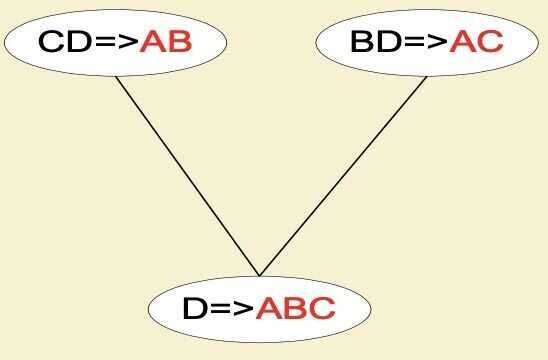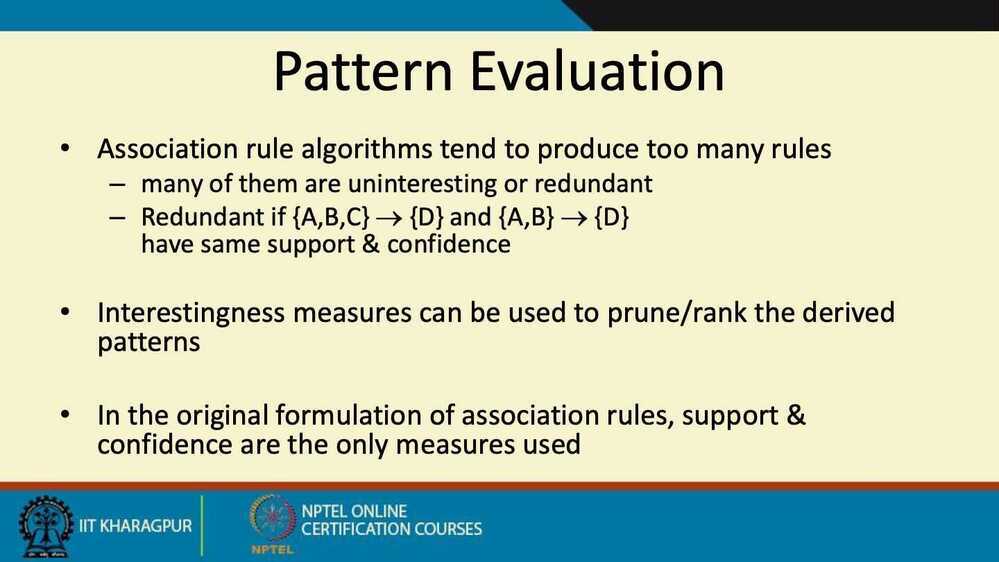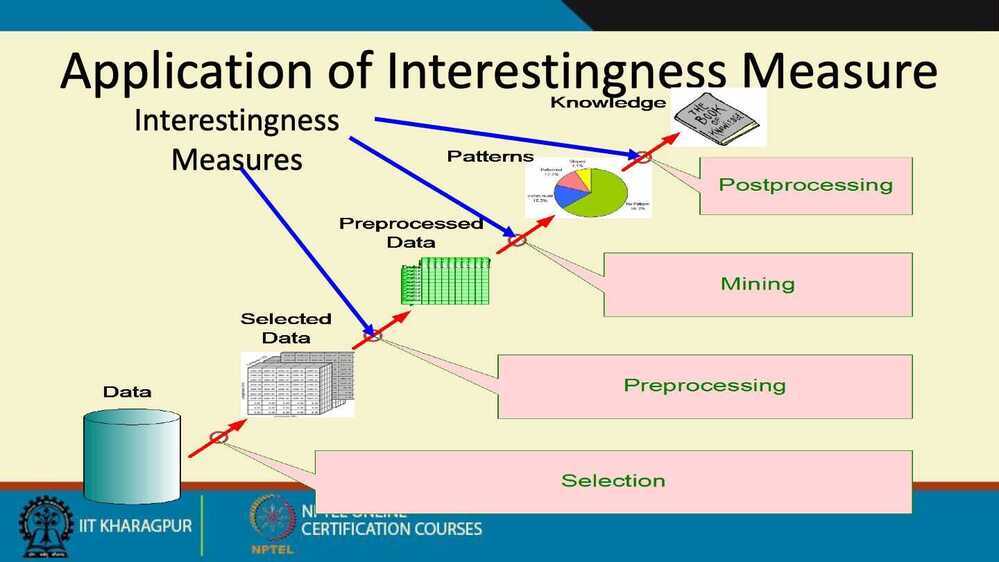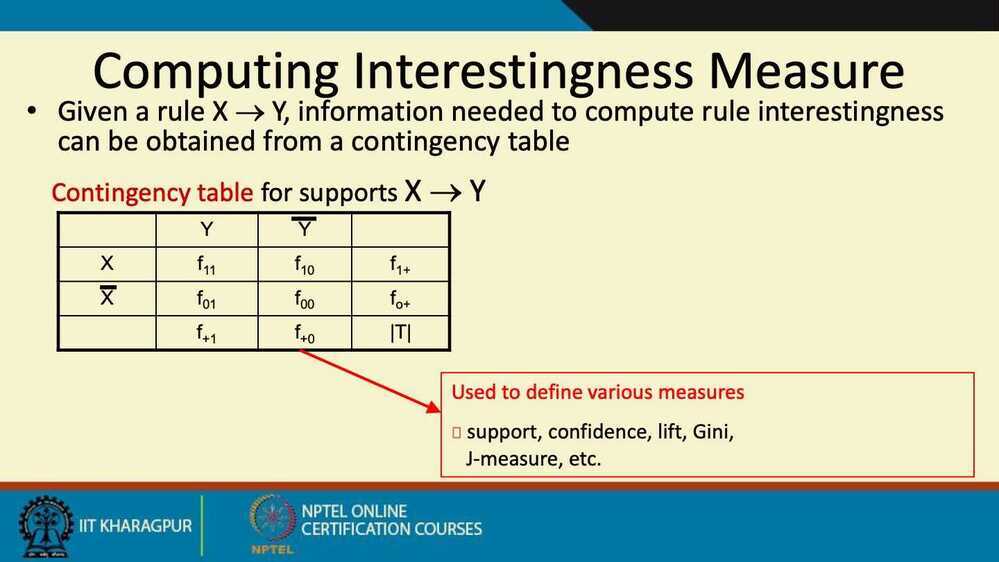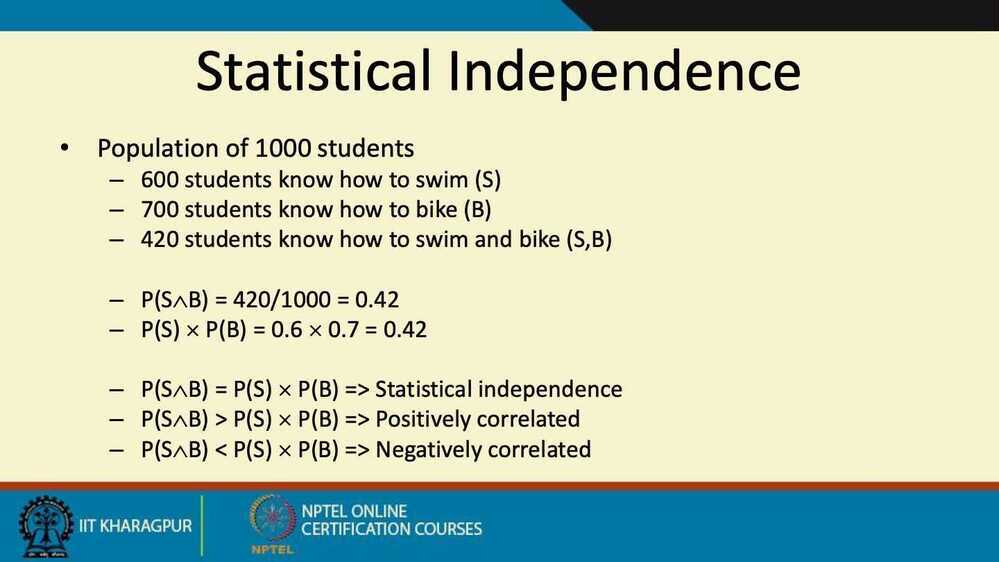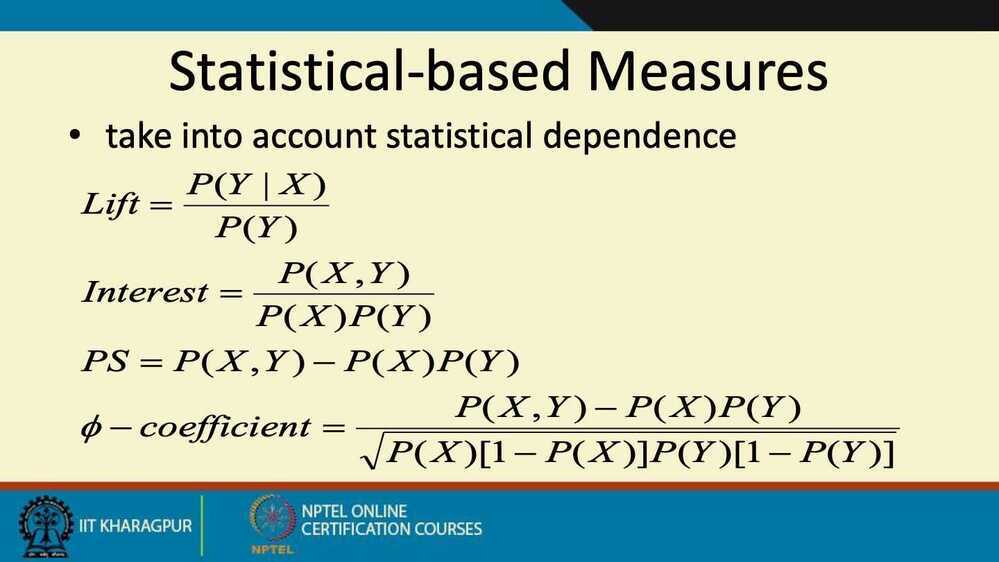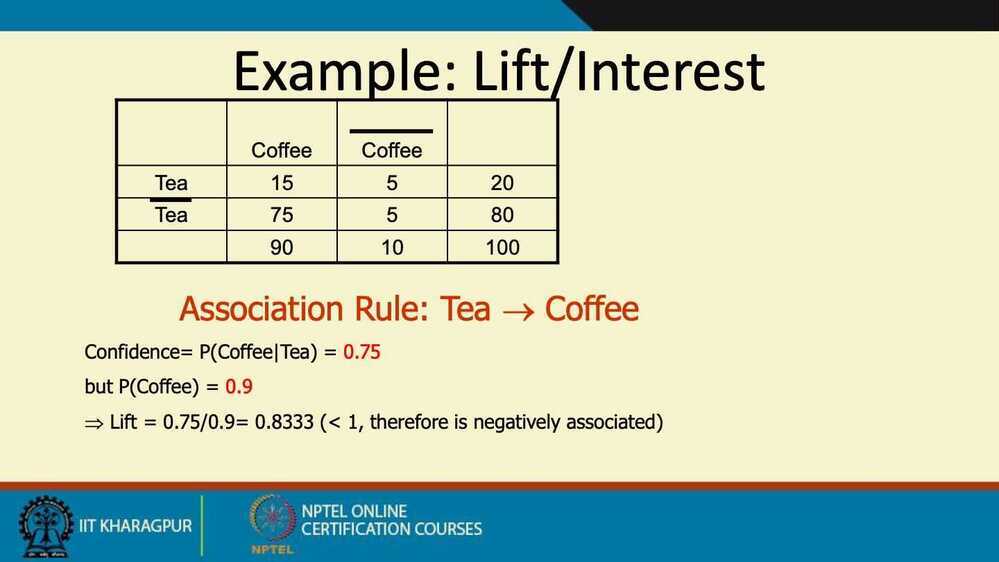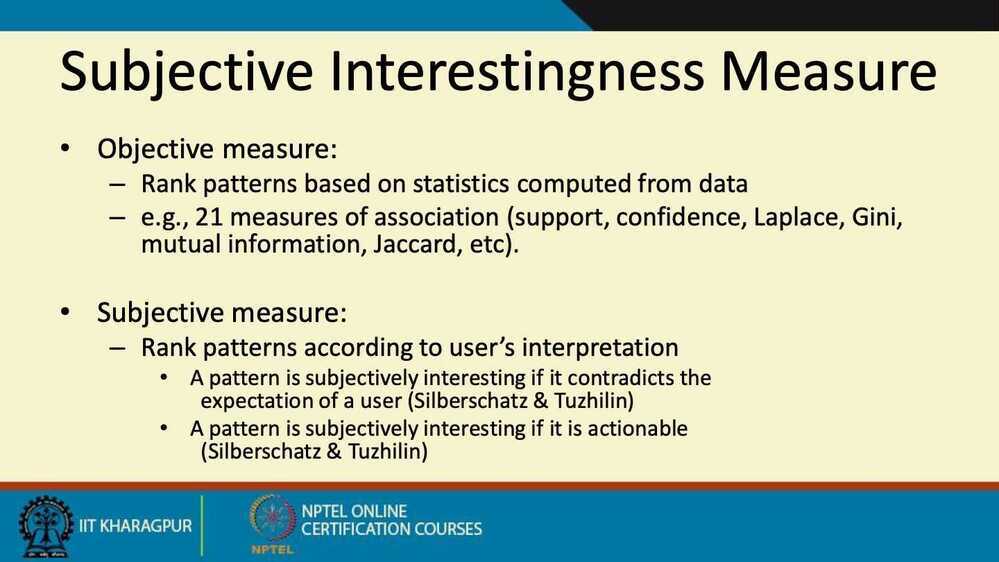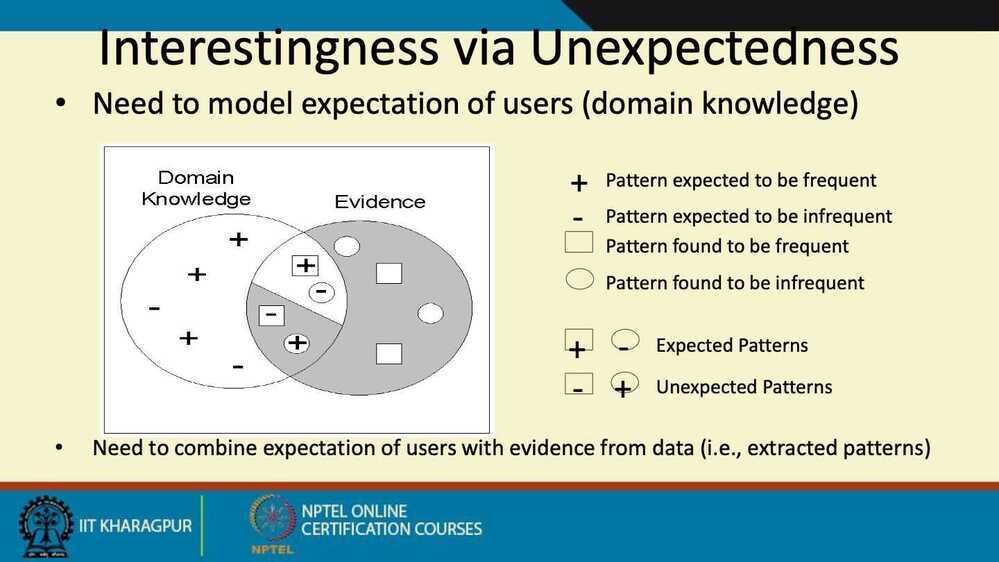Rule generation & Pattern Evaluation
monotone - a continuing sound, especially of a person's voice, that is unchanging in pitch and without intonation.
Ex - "he sat and answered the questionsin a monotone"
According to wikipedia.. a monotonic function is a function that is either increasing or decreasing.. if a function is increasing and decreasing then its not a monotonic function or its an anti-monotonic .
In data mining, what would be a monotonic function would be the support function of an itemset (its frequency in the transaction database). But when "frequent" (i.e sup(X) > supmin) is our criteria : "if a set is frequent, then all of its subset are frequent too",and also"if a set is infrequent then all of its superset are also infrequent." The combination of both means the anti-monotonicity in this context.
Rule Generation
- How to efficiently generate rules from frequent itemsets?
- In general, confidence does not have an anti-monotone property
- But confidence of rules generated from the same itemset has an anti-monotone property
- e.g.,
L = {A,B,C,D}
c (ABC -> D) >= c(AB -> CD) >= c(A -> BCD)
- Confidence is anti-monotone w.r.t. number of items on the RHS of the rule
Confidence (X -> Y) - Measures how often transactions Y apper in transactions that contain X
c(ABC -> D) = |ABCD| / |ABC|
Therefore
|ABCD| / |ABC| >= |ABCD| / |AB| >= |ABCD| / |A|
Since,
|ABC| <= |AB| <= |A|
Rule Generation for Apriori Algorithm
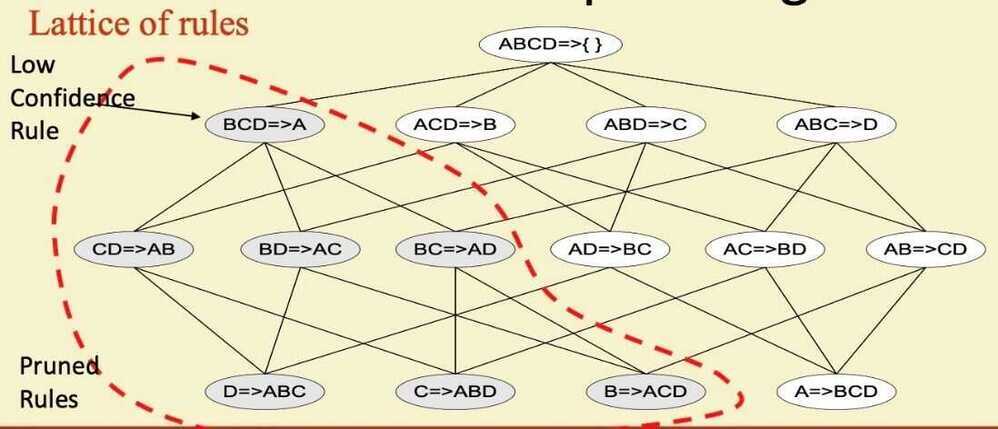
- Candidate rule is generated by merging two rules that share the same prefix in the rule consequent
join (CD => AB, BD => AC) would produce the candidate rule D => ABCPrune rule D => ABC if its subset AB => BC does not have high confidence
